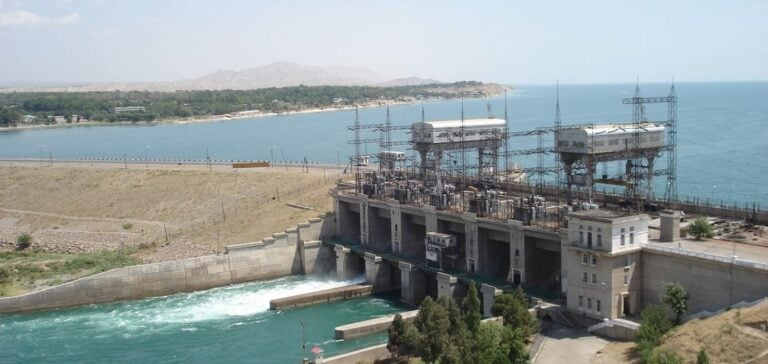Tajikistan is commissioning three refurbished units at the Kayrakkum hydroelectric power station in the Sughd region, following modernization work that has been ongoing since 2019.
Under the impetus of President Emomali Rahmon, these renovations aim to overcome the obsolescence of the equipment, increasing the production capacity of units No.
4, 5 and 6 from 19 MW to 29 MW.
The plant, which has been in operation since 1957, is showing signs of ageing, requiring technical intervention to extend its operational life.
The work includes replacement of turbine control systems, transformers, excitation systems and water pressure devices.
The introduction of six 40 MW transformers, imported from Europe, improves production reliability.
An SF6 gas-insulated control panel replaces the previous 220/110 kV open system, ensuring better management of the electrical infrastructure and a reduction in operational risks.
Optimizing infrastructure for safety and sustainability
The renovations at Kayrakkum are not limited to the production units.
They also extend to the reinforcement of the power plant dam, the modernization of the machine room cranes and the rehabilitation of various structural elements.
Currently, the assembly of parts for unit No.
3, as well as maintenance work on the plant’s upper deck.
These interventions are part of an overall strategy to improve the plant’s production capacity and efficiency.
At the same time, an assessment of the old equipment on unit No.
2 is being carried out to determine future renovation requirements.
Production prospects forecast a 47% increase by 2026, from 580 million kWh to 850 million kWh per year, a significant development for the national power grid and potential exports.
Regional context and implications for the energy sector
This modernization comes at a time when Tajikistan is seeking to position itself as a key player in the Central Asian regional energy market.
The improvement of its infrastructure is aimed at reducing energy losses and maximizing the potential of its hydroelectric resources.
This will enable the country to respond more effectively to growing domestic and international demand for electricity.
The investments made in the Kayrakkum modernization underline Tajikistan’s priority for efficient and sustainable energy management.
Introducing new technologies and modernizing existing equipment are crucial steps towards securing energy supplies and improving competitiveness in neighboring markets.






















